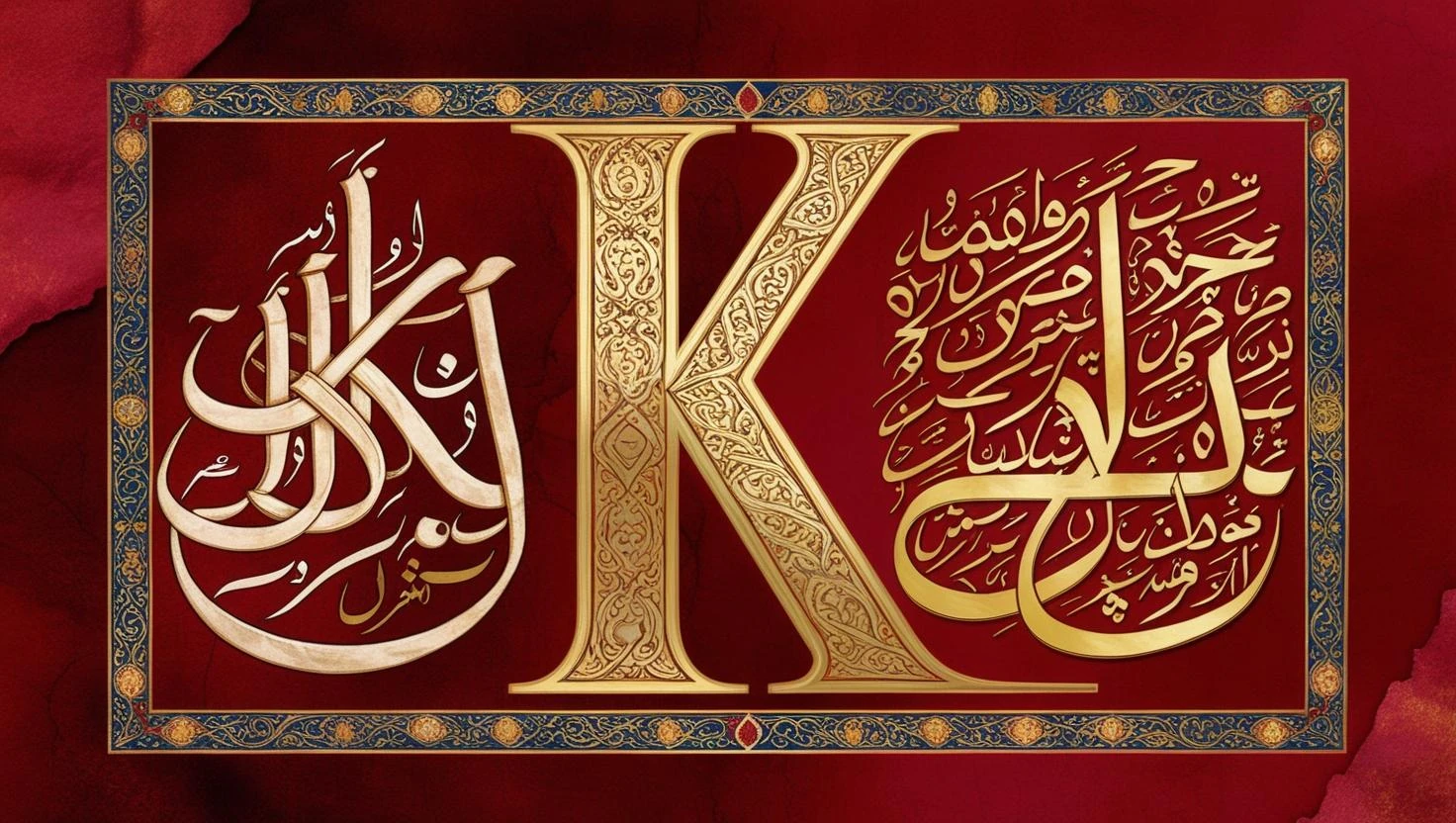
(AI Generated)
You know, there’s just something about the letter K that grabs your attention. I’ve always felt it has a bit of an edge compared to other letters. When I write it or say it out loud, it practically cuts through the air – that sharp “kuh” sound isn’t like the softer letters we use all the time.
It’s got character, you know what I mean? Unlike softer letters, k feels modern, direct, and sometimes even a bit rebellious. Its visual shape and sound create an impression that’s hard to ignore. This distinctive character has made the letter k an interesting subject of study across linguistics, design, and even popular culture.
The Forgotten Cousin of C: Origins of K
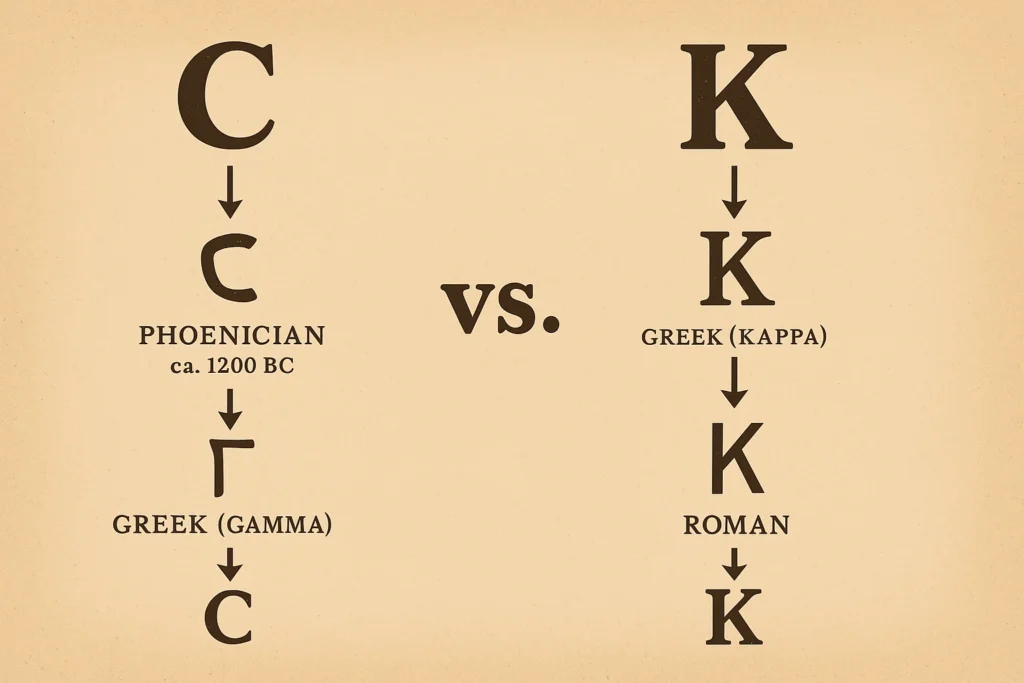
(AI Generated)
K wasn’t always the unique character we know today. In ancient times, it shared duties with the letter C. Both symbols emerged from similar sounds, but they eventually took different paths. The Greeks had their kappa (Κ), while the Romans developed their own version. The split between letter C and letter K happened gradually as languages evolved. Latin eventually favored C for many sounds, pushing letter K to the sidelines. This history explains why we still see pairs like “cat” and “kitten” with different initial letters despite similar sounds.
Many European languages phased out letter K almost entirely, only to bring it back later for specific foreign words. English kept it around, creating that interesting linguistic tension between C and letter K that still exists today. The letter has survived centuries of language evolution to maintain its distinct identity.
K Across Time: From Phoenicia to Korea

(AI Generated)
Isn’t it fascinating how far back the letter K goes? I was reading that these ancient Phoenician traders (you know, those Mediterranean seafaring merchants from way back) came up with one of our earliest alphabets. Their version of K looked nothing like ours, though – more like a little hand with fingers sticking out! I always find it mind-blowing to think about how something we use every day has this incredible backstory stretching back thousands of years.
Sometimes I try to imagine those traders scratching their symbols into clay or whatever they used back then. As this alphabet spread across the Mediterranean, the letter transformed. Greeks rotated and simplified it to become kappa, and the Romans further refined its appearance.
Over time, K traveled through Germanic languages and found a firm footing in English. But perhaps its most notable modern association is with Korea. South Korea’s global rise has linked the letter with innovation and cultural exports. K-pop, K-drama, K-beauty – these terms reflect modern Korean influence worldwide. This tiny letter now signifies an entire cultural movement, showing how a single character can take on massive significance beyond its humble origins.
The Visual Geometry of K: A Letter Made of Angles
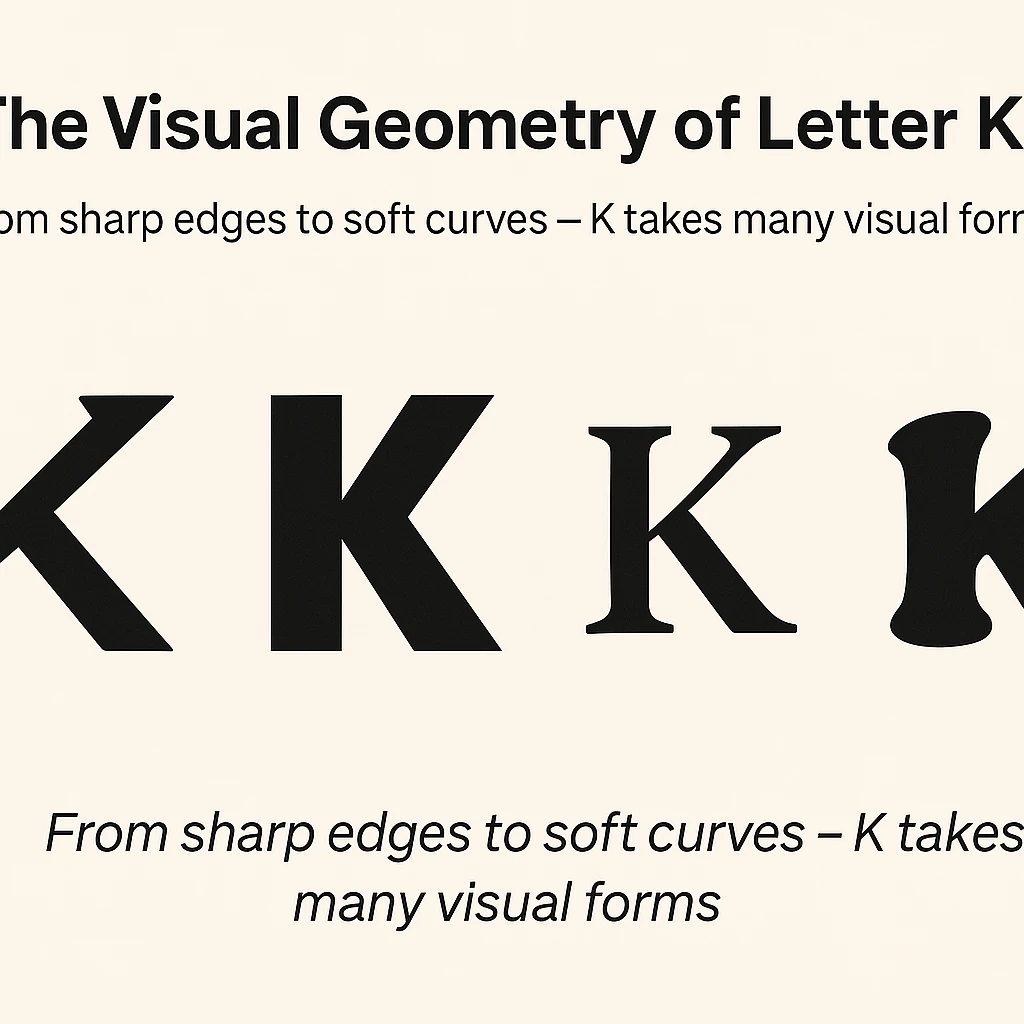
(AI Generated)
K is visually fascinating. Unlike rounded letters like O or S, K consists almost entirely of straight lines and sharp angles. Its structure includes a vertical line intersected by two diagonal strokes that create a distinctive wedge shape. This geometry makes it instantly recognizable and difficult to confuse with other letters.
Designers often appreciate K for its balance and dynamism. The letter seems to lean forward, suggesting motion and progress. You’ve probably noticed how designers play with K’s angles all the time. When a brand wants to look tough or cutting-edge, they’ll sharpen those corners until the K practically screams at you! But flip through some children’s books, and you’ll see the same letter with rounded edges that feel warm and approachable. I’m always fascinated by how much personality shifts with just a few tweaks.
Have you seen how many companies put K front and center in their logos? It’s like they know it’s a showstopper – something about those diagonal lines just pulls your eye right to it. My graphic designer friend says it’s because K has “built-in dynamism” or something fancy like that, but I just think it looks cool. The letter’s structure allows for creative interpretations while maintaining legibility.
How Sound Reflects Motion Through Letter K
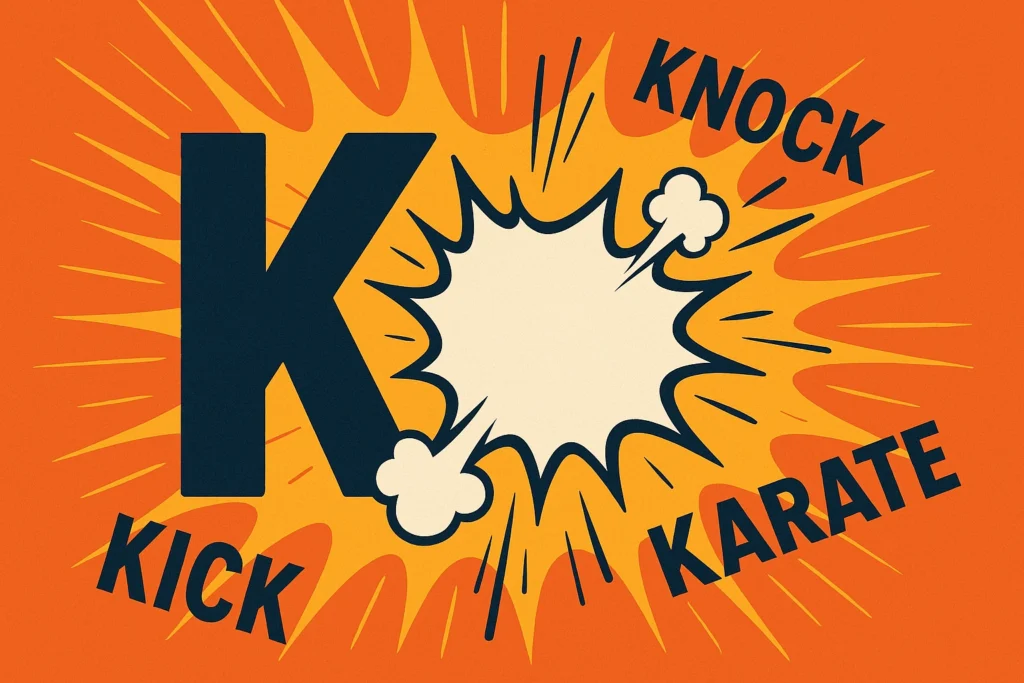
(AI Generated)
Ever tried paying attention to what your mouth actually does when you say the letter K? It’s wild! Your tongue has to press up against the roof of your mouth – way in the back there – and then you sort of explosively push air through. Try it right now with me… “kuh!” Feel that? It’s almost like a tiny firecracker going off in your mouth.
My niece is learning her letters right now, and K is one of her favorites to practice because it feels so different from softer sounds like M or L. I caught myself sitting at my desk yesterday just repeating “kuh-kuh-kuh” like some weird verbal experiment, trying to analyze exactly what was happening. My coworkers probably thought I’d finally lost it! This plosive sound mimics impact or sudden movement. It’s no accident that many action words contain k: kick, knock, karate, kindle.
The letter k appears frequently in words describing kinetic energy or forceful motion. Think about it – knuckle, knack, kaboom, kindle. When we hear these words, the k sound helps us mentally process the action being described. This connection between the physical formation of the sound and its meaning shows how our language evolved to reflect real-world experiences through sound.
Rare but Remarkable: Frequency vs. Force

(AI Generated)
Despite its striking qualities, k is relatively uncommon in English. It ranks 22nd in frequency among letters, appearing in only about 0.8% of written English. Yet this rarity might actually enhance its impact. When k appears, it commands attention precisely because we don’t see it constantly.
Marketers and advertisers understand this power. You know what’s funny? Marketers are obsessed with swapping C’s for K’s! I noticed this trend years ago and now I can’t unsee it. Like, someone in a boardroom decided “Crispy Cream” wasn’t catchy enough, but “Krispy Kreme” – now that’s worth lining up for!
Same with “Cool-Aid” becoming “Kool-Aid.” I mean, would you really grab a fighting game called “Mortal Combat”? Nah, but “Mortal Kombat” with that aggressive K? Take my money! My buddy who works in advertising says it’s because our brains register that little letter swap as something unexpected, making us pay more attention.
Clever trick, right? Next time you’re shopping, count how many brands pull this K-switch – it’s everywhere once you start looking! The letter’s visual sharpness and sound make an instant impression. Its relative scarcity in everyday language gives it a special quality that can make words stand out on a page or in speech.
Words That Wouldn’t Work Without K
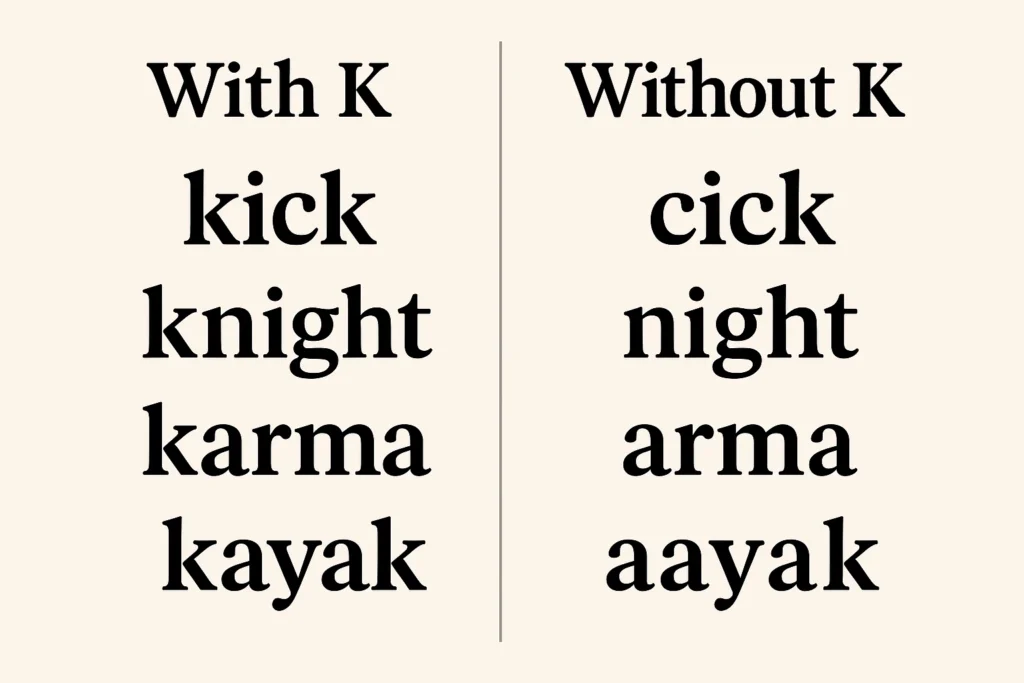
(AI Generated)
Some words simply need the letter k to maintain their essence and impact. Replace it with another letter, and they lose their identity completely. Take “kick” – without k, it might become “cick” or “tic,” neither capturing the forceful action of the original. “Knight” becomes unrecognizable without its silent but powerful letter k.
Isn’t it neat how some K-words just feel so… perfect? Take “kayak” for example – I love how it reads the same backward as forward. I once pointed this out to my dad on a camping trip, and he stared at me for a solid minute before saying, “Huh, never noticed that!” Then there’s “karma” – such a tiny word but packed with this huge spiritual concept that people have debated for centuries. My yoga instructor throws this word around constantly, and honestly, it hits differently every time. And don’t get me started on “kaleidoscope” – remember those toys from childhood?
That word perfectly captures all those shifting colors and patterns! I still can’t spell it right on the first try, though, always have to double-check the middle part. These words would completely lose their magic without that special K up front, don’t you think? The letter k gives these words their character and sound profile. It’s the sharp edge that helps define their meaning and feel. Even when silent, as in “know” or “knit,” removing k would fundamentally alter the word’s identity and historical roots.
The Silent K: A Linguistic Paradox
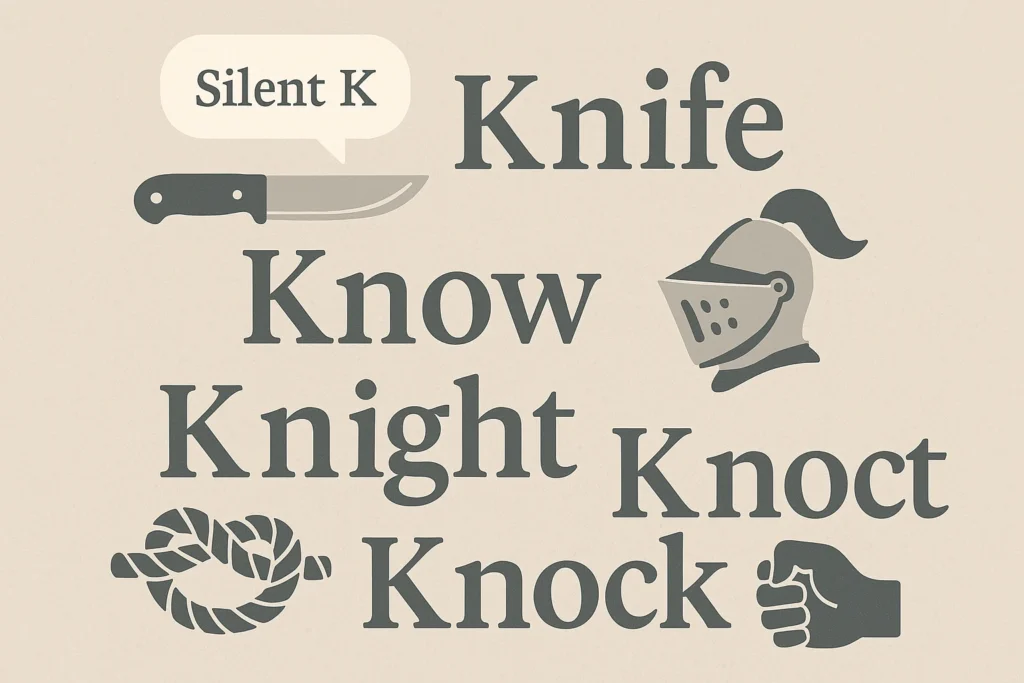
(AI Generated)
Not all k’s make themselves heard. English has a collection of words where the letter k stands silent at the beginning: know, knife, knee, knock, knot. This peculiar feature comes from our language’s history. These words once pronounced their k’s in Old English, but pronunciation shifted over centuries while spelling remained frozen in time.
The silent k creates an interesting learning challenge. Children must memorize these exceptions, and English language learners often struggle with them. Yet these silent letters serve a purpose. They connect words to their history and related terms. That sneaky silent letter K in “knife” is actually pretty cool when you think about it. I remember being so confused by this as a kid—like, why put a letter there if we’re just gonna ignore it?
But then my English teacher blew my mind when she pointed out how it connects to “knives,” where you actually hear a hint of that K sound. It’s like this little linguistic time capsule! Makes you wonder how many people actually said “k-nife” way back in the day. I’m always stumbling across these weird quirks in English that make zero sense until you dig into the history.
My friend who studies linguistics calls these silent letters “fossils” because they’re like preserved evidence of how people used to talk centuries ago. Still doesn’t make it any easier to explain to my nephew who’s learning to read, though—poor kid thinks I’m making up random spelling rules!
Knight or Night? How Letter K Adds Drama to Words
The presence or absence of k can completely transform a word. Consider “knight” versus “night” – one letter changes everything from a medieval warrior to the darkness after sunset. Or “knot” versus “not” – from a tangled rope to a simple negation.
K adds a layer of complexity and sometimes drama to words. It creates distinctions that enrich our language. Have you ever noticed how words with K just hit differently? I swear there’s something about them that feels more… real, you know? Like you can almost grab them. Take “knock” versus “tap” – which one can you practically feel in your knuckles?
Or compare “kick” to “push” – one’s just way more visceral! I’ve caught myself choosing K-words when I really want to make a point in conversation. My creative writing professor back in college would probably call this “sound symbolism” or something fancy, but I think it’s simpler than that. These K-words just land with more oomph and more substance.
They’re the difference between describing something vaguely and making someone actually feel it. Next time you’re trying to explain something physical, try swapping in a good K-word and watch how people react differently! This distinct character makes letter k an essential tool for precision in meaning, even when it doesn’t change pronunciation.
K in Names: From Kings to Kardashians
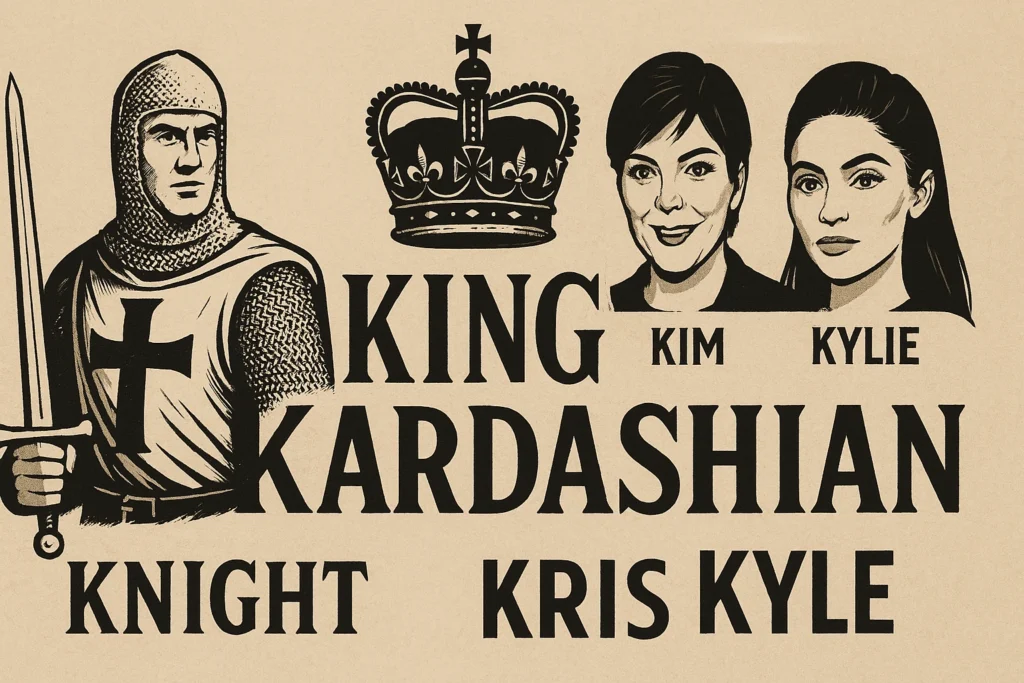
(AI Generated)
Throughout history, the letter k has adorned names associated with power and prestige. Kings, knights, and kaisers all feature this striking letter. Its royal associations extend from ancient times to modern celebrities. The Kardashian family has elevated K-names to a business strategy, with Kris, Kim, Khloé, Kourtney, Kendall, and Kylie creating a powerful brand identity built partly around this letter.
Parents sometimes choose K-names for their distinctive quality. It’s funny how certain K-names just never seem to go out of style, right? I’ve got a Kevin in my family tree from practically every generation! My mom almost named me Katherine (after her grandmother), but went with something else at the last minute—sometimes I wonder how different I’d feel as a “Kate” or “Kathy.”
And I swear every other guy I dated in college was either a Ken or Kyle! My Korean friend explained to me once that names starting with the letter K are super meaningful in her culture—something about the sound representing strength and character. When I was pregnant, I definitely had Kenneth on my shortlist (my husband vetoed it though… still slightly bitter about that).
Crazy how much weight we put on these single-letter choices that follow our kids for life! Do you know anyone with a K-name who really seems to embody that sharp, distinctive energy? Korean names often feature the letter, reflecting the sound patterns of the language. The letter’s visual and auditory strength seems to make it a natural choice for naming across many cultures.
Tech, Coding, and the Symbolic K
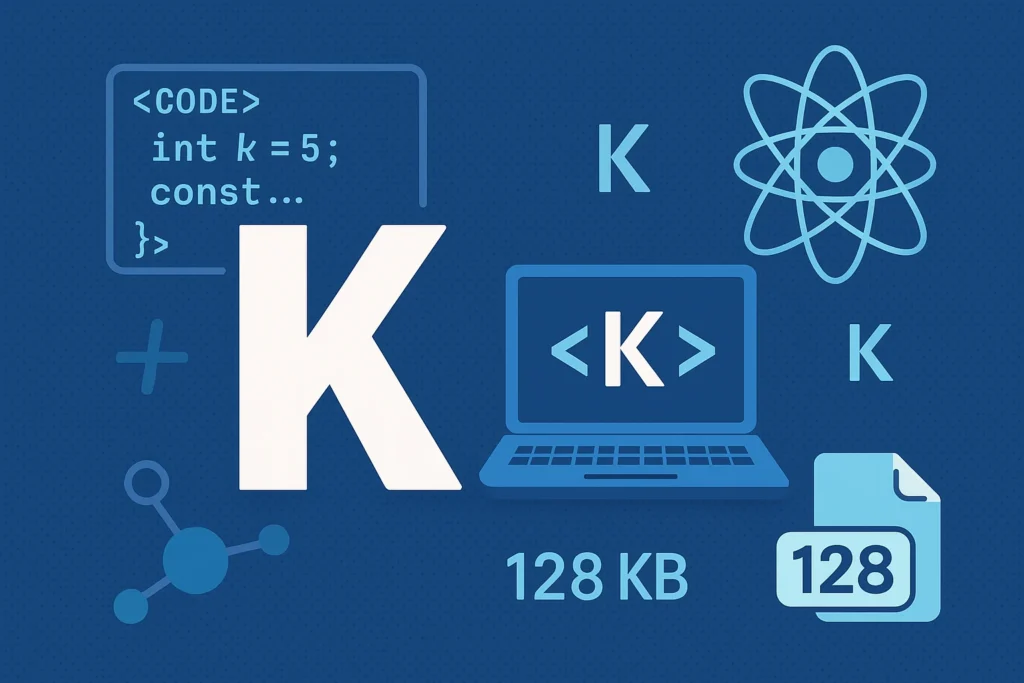
(AI Generated)
In our digital world, k has taken on new meanings. So my brother’s a programmer, right? He’s always going on about his “elegant code” (whatever that means!), and I noticed he constantly uses “k” in his work. When I finally asked him about it, he laughed and said “k” is basically programmer shorthand – super convenient when you need a quick variable for counting stuff or marking constants. Saves precious keystrokes, apparently!
Reminds me of my painful high school physics days when we had to use the letter K for temperature measurements in Kelvin. Our teacher was OBSESSED with proper units – would literally circle every missing letter K in angry red pen. I still remember sweating through those thermodynamics problems, converting from Celsius to Kelvin, adding that 273.15 every single time.
Who knew such a tiny letter could cause so much stress in science class? My brother and I joke that letter K is the overachiever of the alphabet – not content with just being in words, it had to invade math and science too! Computer users recognize letter K as a keyboard event or keystroke. Digital file sizes use K to represent kilobytes (1,024 bytes).
The tech industry has embraced letter k for its efficiency and clarity. One-letter variables save space in code, and k’s distinctive shape makes it easy to identify quickly. As technology increasingly shapes our language, letter k has found new relevance in technical contexts. Its precision fits perfectly with the exacting nature of coding and scientific notation.
The Kaleidoscopic K in Branding and Marketing
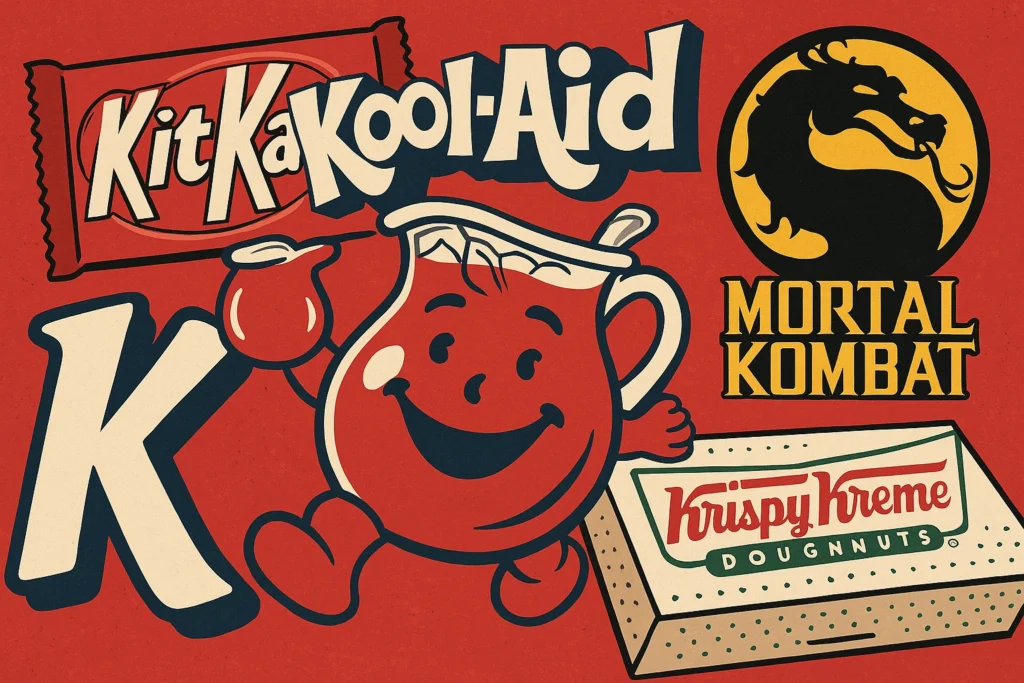
(AI Generated)
Marketing specialists love the letter k. Its distinctive shape and sound make it ideal for creating memorable brand names. Companies often replace c with k to stand out from competitors. Man, these K-brands are absolutely everywhere once you start looking! I was at the mall last weekend and suddenly realized I was holding a Kit Kat while walking past a Krispy Kreme.
Total K overload! My nephew is obsessed with Mortal Kombat – he even corrected me when I accidentally called it “Combat” once. And who among us hasn’t mixed up some Kool-Aid on a hot summer day? My mom used to keep those little packets in the pantry year-round. I swear marketing people must have some secret handbook that says, “Need to make your brand pop? Just replace that boring C with a killer K!” Works every time though – I can picture all those logos perfectly in my head right now. Can’t you?
The letter creates a visual anchor in logos and packaging. Its strong angles can be stylized to suggest different brand personalities. For playful brands, k might appear rounded and bouncy. For tech companies, it might take on a more angular, futuristic appearance. This versatility makes letter K a valuable asset in visual identity. Its relative rarity in English also helps brands stand out in a crowded marketplace.
K and the Unseen Languages
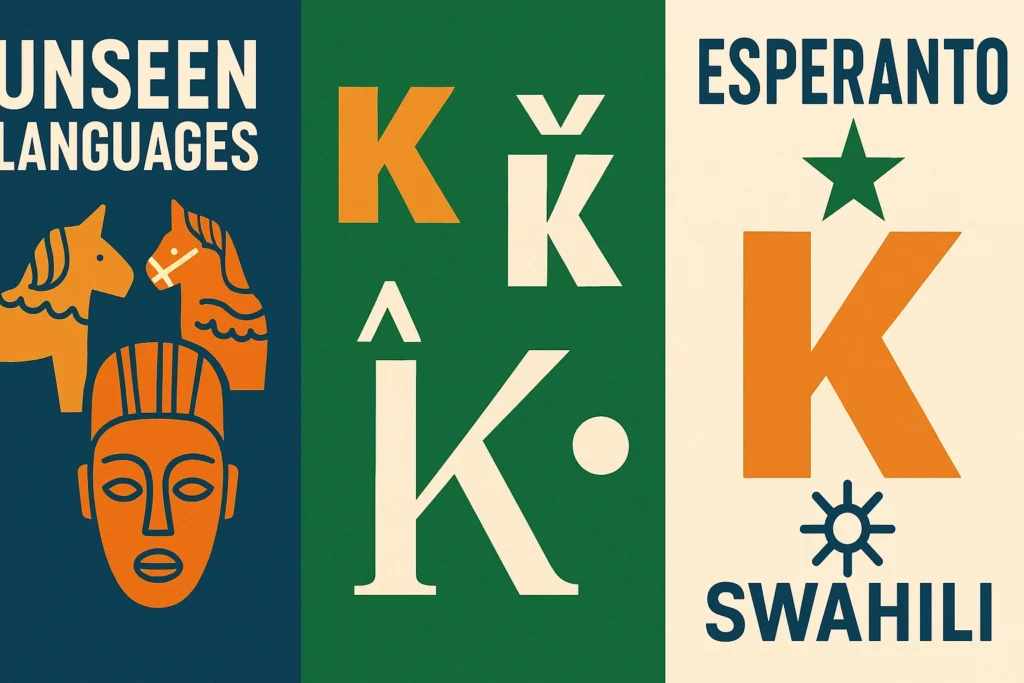
(AI Generated)
Beyond English, k plays fascinating roles in languages worldwide. Do you know what’s wild about language? The way different cultures handle even the most basic sounds! Take Esperanto – that made-up language people created to be international. I tried learning it during my weird pandemic hobby phase (lasted about two weeks, if I’m honest). They’re way more straightforward with their K’s than we are in English – if it sounds like a K, they just write a K. Makes way more sense than our confusing C/K situation!
My friend who studied abroad in Tanzania was telling me how Swahili and lots of other African languages are absolutely loaded with these punchy K sounds. When she speaks it, there’s this incredible rhythm that English just doesn’t have. I could listen to her count in Swahili all day – the K sounds create this amazing heartbeat-like cadence.
Then there’s my Swedish grandmother who used to say these words with letter K combinations that my American tongue just couldn’t handle! I’d try to repeat after her, and she’d just laugh at my horrible pronunciation. There’s this particular throat-clearing K sound in Swedish that took me years to even come close to getting right. Still can’t nail it after three glasses of wine though! Finnish uses k extensively in its consonant-rich vocabulary. The letter crosses linguistic families and writing systems, appearing in modified forms in Cyrillic and other scripts. This global presence shows k’s fundamental importance in representing certain human speech sounds across cultural boundaries.
Kid-Friendly K: Education and Phonics
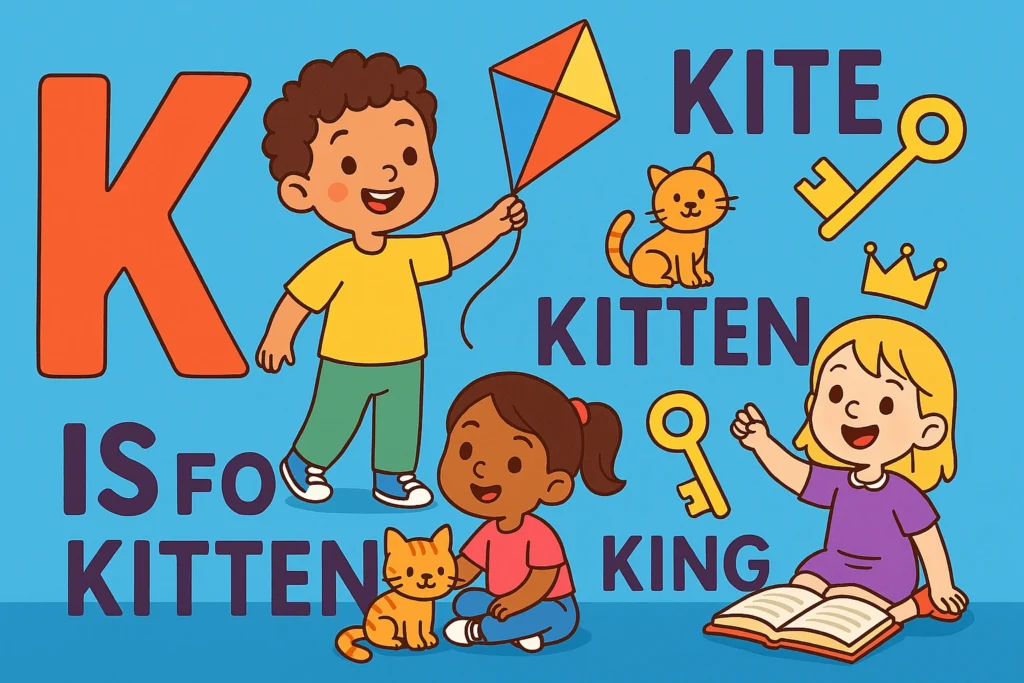
(AI Generated)
For young learners, K offers a relatively straightforward introduction to phonics. Unlike complex letters with multiple sounds, k consistently produces its “kuh” sound. Teachers often introduce it with familiar examples: kitten, kite, key, king.
Children’s media embraces K-words for their simplicity and impact. Isn’t it funny how many iconic characters rock the letter K? I was watching old movies with my niece last weekend and King Kong came on—that massive ape climbing the Empire State Building. Those hard letter K sounds in his name perfectly match his powerful character! Then we switched to her favorite Muppets episodes, and there’s Kermit with his gentle “it’s not easy being green” philosophy. I still have a terrible impression of his voice that makes my niece cringe every time.
And don’t get me started on Kung Fu Panda! My son went through a phase where we watched it literally every Saturday morning for about six months straight. I can still hear Jack Black’s voice saying those K-sounds with all that enthusiasm. Something about those K names just sticks in your head, doesn’t it? I catch myself noticing new K-characters in shows all the time now—it’s like once you see the pattern, you can’t unsee it!
Songs and rhymes featuring k help children practice the sound. The letter’s strong visual shape also makes it relatively easy for young hands to write. These qualities make letter k an important building block in early literacy development.
Karate, Koalas, and Other Cultural K-Icons
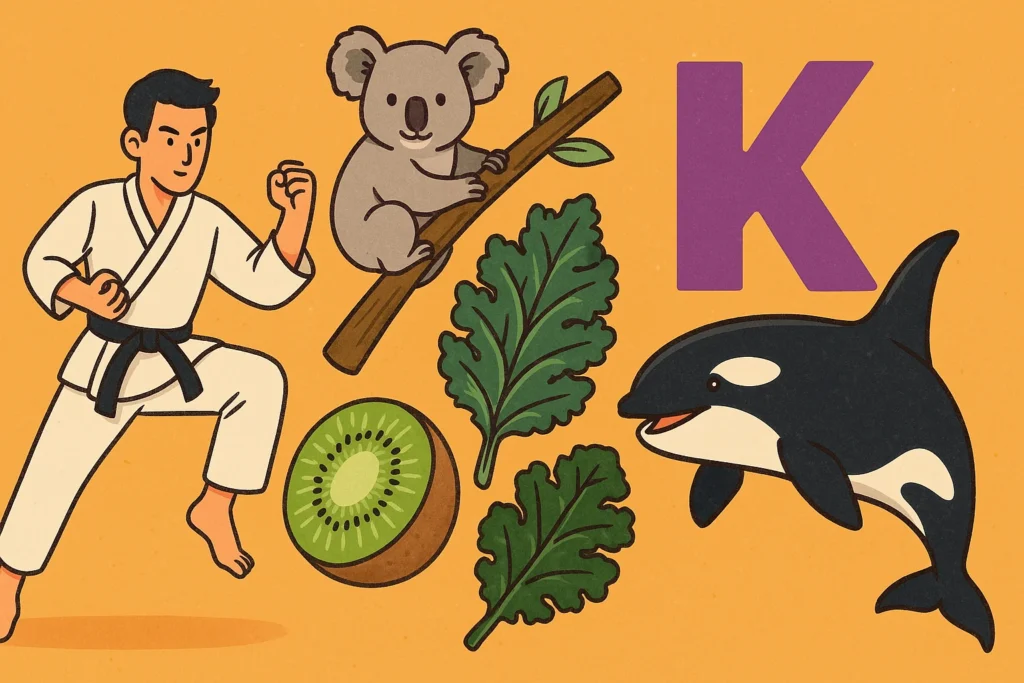
(AI Generated)
Certain cultural touchstones have become permanently associated with the letter k. Martial arts like karate and kung fu bring Eastern traditions to Western awareness through k-branded activities. Animals like koalas, kangaroos, and killer whales create strong k-associations in nature.
In food, kiwi, kebabs, and kale have gained popularity worldwide. Each of these cultural representations reinforces our mental connection to the letter and its distinctive qualities. The sharp sound of k seems especially suited to activities involving precision and focused energy, explaining its prevalence in martial arts terminology.
The Digital Age of K: Hashtags and Handles
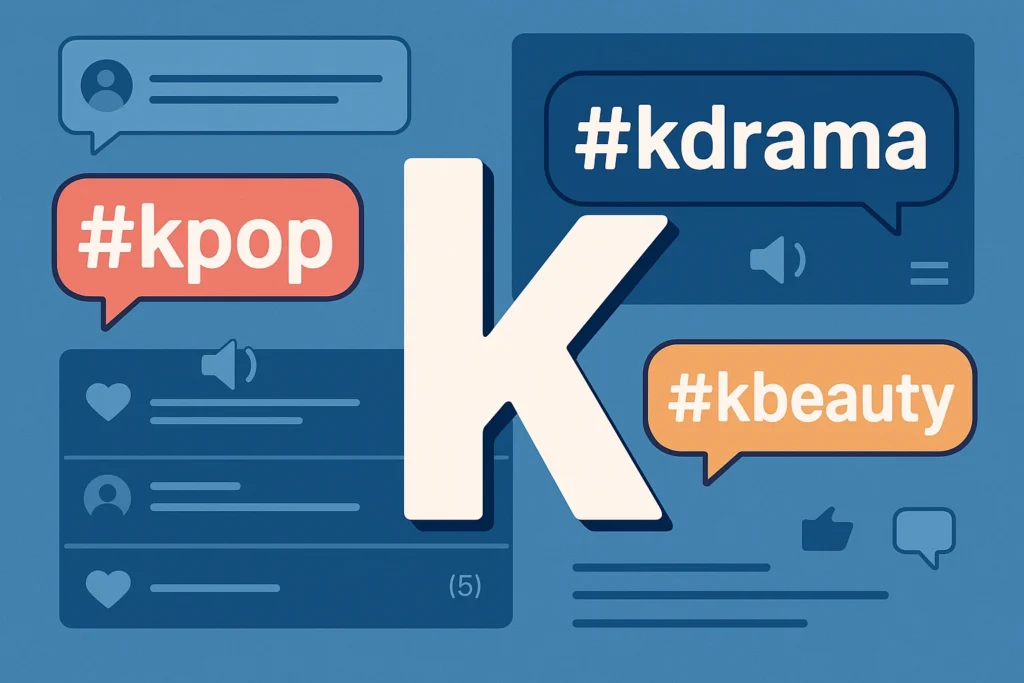
(AI Generated)
Social media has created new territories for the letter k to conquer. So I fell down this absolute rabbit hole on TikTok last night – started with one random K-pop dance video and three hours later, I’m somehow watching Korean street food tours! The #kpop hashtag is INSANE, you guys – millions upon millions of posts! My sister’s been trying to convert me to K-dramas for years (she’s obsessed with some actor named Hyun Bin?), and now my entire algorithm is feeding me #kdrama clips. Not complaining though!
And don’t even get me started on #kbeauty – my bathroom cabinet is starting to look like a mini Sephora with all these 10-step skincare routines I’ve been influenced to buy. My wallet is crying, but my skin is glowing! It’s wild how one little letter has basically created these entire digital communities. I swear half my Instagram Explore page now has a K-something hashtag. Is anyone else experiencing this K-takeover of their social feeds, or is it just me? Beyond Korean connections, “k” has become digital shorthand for “okay” in text messages and online chats.
This digital evolution shows how the letter continues to adapt to new communication contexts. Its brevity makes it valuable in character-limited platforms. Its distinctive appearance helps it stand out in usernames and handles. As our communication becomes increasingly digital, K has maintained its relevance through these new applications.
Modern Fascination: Why the Letter K Still Captivates Us
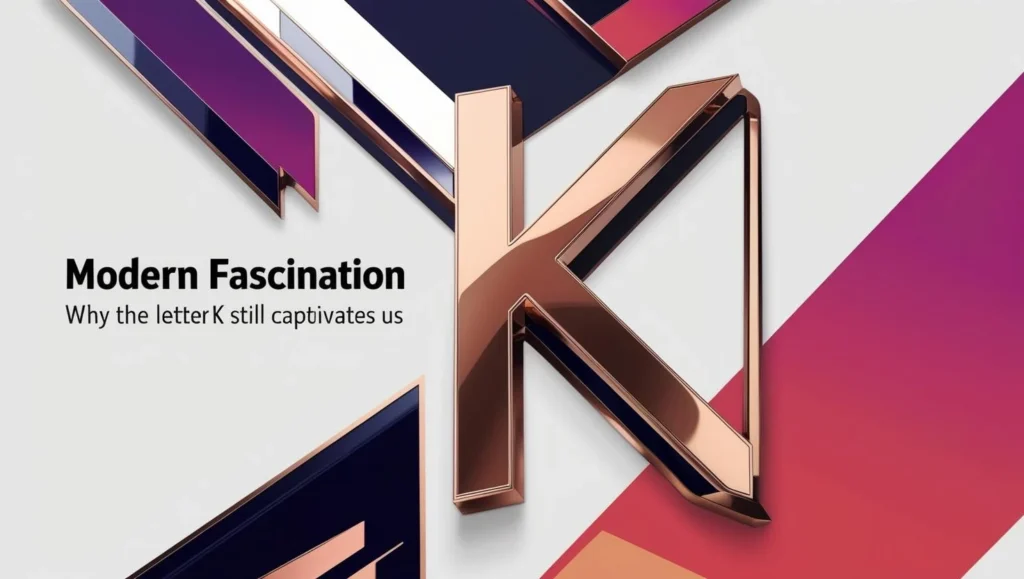 The letter K remains a powerful symbol in modern times, influencing everything from iconic brand logos to popular culture and everyday communication.(AI Generated)
The letter K remains a powerful symbol in modern times, influencing everything from iconic brand logos to popular culture and everyday communication.(AI Generated)
Be it brands like Kia, Kodak, and Krispy Kreme that have stripped the K down to its sleek essentials for easy recognition in the crowded marketplace, or pop culture icons like Superman’s “Krypton” and the Kardashians who have firmly etched their mark on this letter – its birth-tale power and fascination are still as effective as ever.
Native to the human experience, the letter K captures an ancient world and a modern life force. It also links two worlds through its peculiar blend of strengths: history and present are united.
The Harshest Sound? Debates About Letter K in Phonetics
Do you know how some people geek out about sports stats or movie trivia? Well, my linguistics professor friend goes absolutely nuts about sounds like K! We were grabbing coffee last week, and I made the mistake of mentioning how “hard” the letter K sounds—next thing I know, she’s excitedly explaining that it’s actually called an “unvoiced velar plosive” (try saying that three times fast after a few drinks!).
Apparently, there’s this whole academic debate about which sounds are the most forceful. She was drawing diagrams on napkins showing how your tongue hits the back of your mouth when you say “kuh”—practically knocking over our lattes in her enthusiasm! According to her, letter K consistently wins the “most aggressive consonant” contest among language nerds.
I tried arguing that X or Z seemed harsher to me, but she shot back with all this technical evidence about airflow and tongue position. Who knew people could get so passionate about a single sound? Though I gotta admit, after our conversation, I started paying attention to how my mouth feels when I say different letters—it’s oddly fascinating! Its production requires a complete blockage of airflow followed by a sudden release, creating that characteristic sharp sound.
Different languages position letter k slightly differently in their sound systems. Some languages distinguish between aspirated and unaspirated letter k sounds. Others place k in combinations that English speakers find challenging, like the “kh” in Khmer or Ukrainian. These variations show how a seemingly simple sound can take on complex forms across human languages while maintaining its essential character.
The Letter K in Different Languages
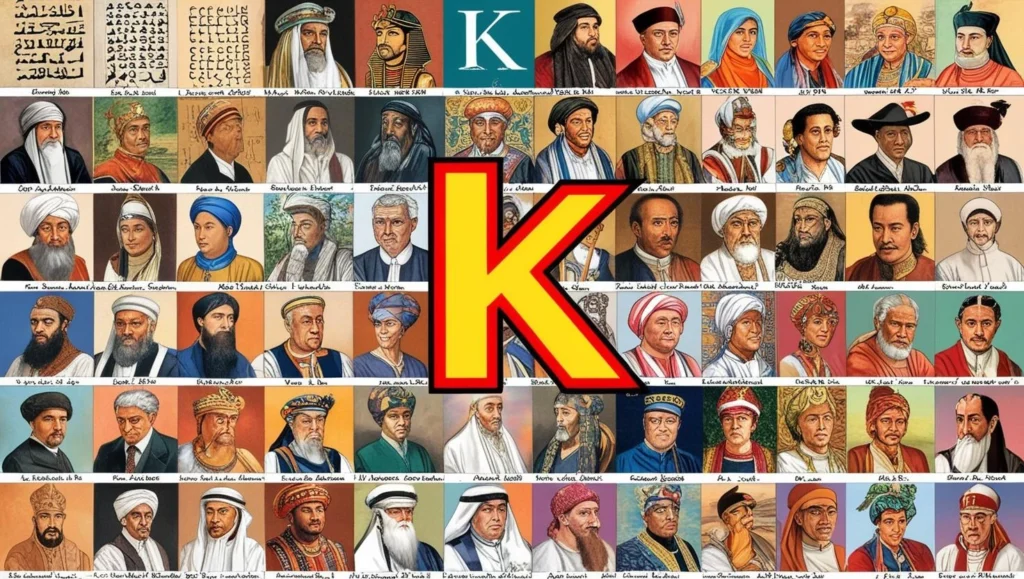 From Egyptian hieroglyphics to Mesopotamian cuneiform, the letter K has been a symbol of power and divinity across ancient civilizations.(AI Generated)
From Egyptian hieroglyphics to Mesopotamian cuneiform, the letter K has been a symbol of power and divinity across ancient civilizations.(AI Generated)
In the meantime, when it comes to a letter, K is also a powerful, forthright sound serving to express strength or to intensify something, as in such words as knight and king.
In Russian or Polish, two Slavic languages, K is an ordinary and flexible consonant, which can be found in many words spoken every day or in people’s names. Often it bears the stamp of family ties, something that is familiar to all.
K in Motion: Logos, Icons, and Interfaces
The digital design world has embraced letter k for its visual potential. Interface designers appreciate its simple geometry that renders clearly at various sizes. Animated logos often feature k in motion, emphasizing its dynamic qualities. The letter’s angles create natural points for the animation to begin or end.
Video games and apps frequently use k in their titles to convey action and excitement. The letter’s shape allows for creative interpretations while remaining recognizable. Its distinctiveness helps it function effectively as an icon or simplified logo. This balance of simplicity and character makes K particularly valuable in contexts where visual clarity and memorability matter.
Myths and Legends: The Letter K in Ancient Civilizations
The letter K has woven itself into ancient civilizations’ myths and legends.
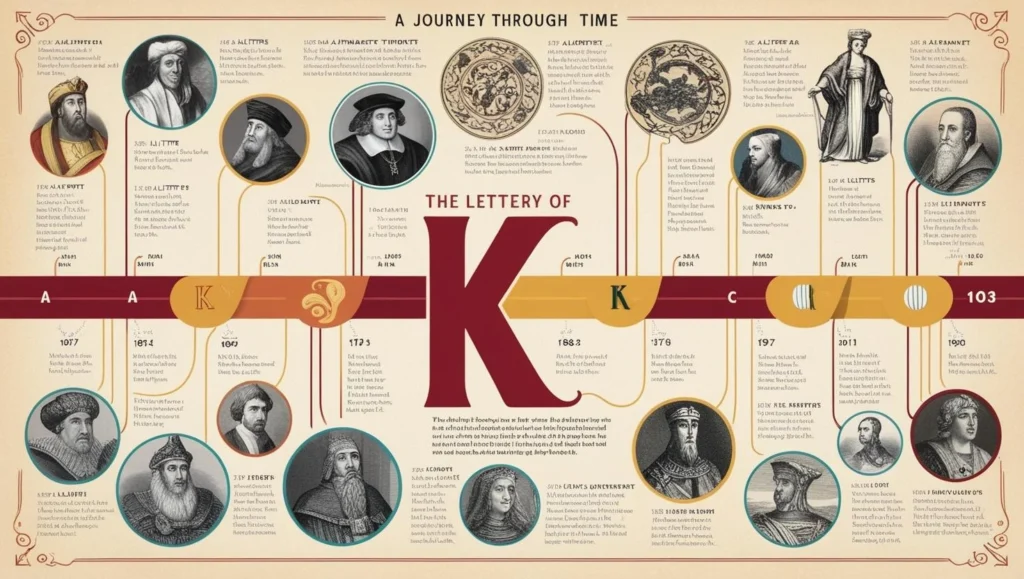 The letter K takes on unique forms and meanings across languages, showcasing its universal appeal and adaptability. (AI Generated)
The letter K takes on unique forms and meanings across languages, showcasing its universal appeal and adaptability. (AI Generated)
In Egyptian hieroglyphics, K stood for the “kh” sound expressed by two or more symbols, one resembling a cross. Crosses were linked to power, and divinities were linked to divine realities. This reflects the association between rulership and divine right with which K began in kingship.
Words That Begin With Letter K
K kicks with kinetic energy — a letter of motion, clarity, and precision. Explore these crisp concepts:
- Knowledge – The foundation of personal and professional growth. Knowledge and online learning
- Keyword – A core term that unlocks visibility in search engines. SEO basics
- Kickstart – To launch quickly with power and purpose. Kickstarter ideas
Closing Thoughts: K as a Catalyst Letter
K truly functions as a catalyst in our language and culture. It initiates, energizes, and transforms. From its ancient origins to its digital future, this letter has maintained a distinctive identity that cuts through noise and creates meaning. Its sharp angles and decisive sound make it impossible to ignore.
Whether in poetry or programming, brand names, or biology terms, k brings its unique character to everything it touches. It reminds us that even the smallest elements of language carry significant power. A single letter can change meaning, create identity, and shape perception. K demonstrates how form and function merge in language to create something greater than the sum of its parts.
Continue Your Alphabet Journey
Explore More Letters:
A | B | C | D | E | F | G | H | I | J | K | L | M | N | O | P | Q | R | S | T | U | V | W | X | Y | Z
Share this article:
Did you enjoy learning about the letter K? Share your thoughts in the comments below or spread the knowledge by sharing this article with fellow language enthusiasts!
